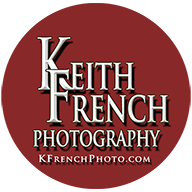Winter Photography Tips
Winter photography involves shooting in the cold weather which is usually a fascinating experience. Winter transforms different locations and landscapes into dream-like scenes which become somehow different from any other time of the year. The challenge of winter photography is the cold temperatures which makes most photographers shy away from leaving the comfort of their house or cars to shoot these breathtaking scenes.
There is a variety of winter gear that are helpful in such conditions, not only to keep you warm but also to protect your equipment when shooting. First, you have to dress to the occasion, this is not the time where you put on a pair of shorts or a light T-shirt stating "I am in love with my camera!" In such environmental conditions, you have to dress in layers as if you intend to go skiing, hiking or snowshoeing. These layers will protect you and keep you comfortable when moving and then when standing still while taking pictures. The outermost layer will act as a moisture and wind barrier, the middle layer provides insulation while the base layer helps in wicking away perspiration. You can add a pair of warm boots with rubber along the toe, a pair of shooter's gloves which allows one to easily pull out the trigger finger and sunglasses to protect your eyes from rays due to the sun reflecting off the snow. Make sure you carry extra batteries for your camera and keep them close to your skin to extend their life. Batteries tend to lose power more rapidly when exposed to low temperatures. Avoid breathing on your gear, because the warmth from your breath will condense and freeze on the lens or the camera. It is advisable that you try holding your breath when composing through the view finder or if you have an articulating screen, use that for composing. Also ensure the tripod does not get wet because as soon as the water freezes, the tripod becomes difficult to use, the best thing is to keep it as dry as possible at all time.
Images tend to look great when taken against the sun or when the sun is included in the frame. When you have a camera with a good lens that is capable of handling flares well and draw great sun stars, the sun can be a great compensational element in your image. However, the lens of the camera should be adjusted to a small aperture such as f/16 or f/22.
Winter offers a great opportunity to try black and white photography because the snow and frost create favorable conditions for black and white photographs. The shadow of objects are usually prolonged by the low sun, therefore, shooting in the harsh midday sun is the best option for black and white photography. During sunny winters you can get some great shots and play with the projected shadows. Black and whites can also be a way to show off your waterscapes during those dull gray days of winter without sun. Look for scenes with heavy contrast such as pine trees and snow, or buildings and snow. There aren't many if any shadows on days like this so it prevents a flat scene or a scene where the tonal range is low. Red building are dark gray in monochromatic scenes and can really look sharp.
Using your camera during winter is a challenging task, for instance, achieving the correct exposure. The metering systems of all cameras are usually calibrated to base exposure of neutral gray or neutral tonality. Since the landscapes are covered in white snow, they will tend to influence and dominate the meter exposure readings of your camera. When you entirely rely on the camera's meter for exposure, you are likely to end up with snow-covered images that are underexposed and appear dull gray. You're going to want to learn up about your camera's metering system especially how to over ride it using exposure compensation.
In direct sunlight, snow should always appear white but not blown out, meaning no details in the brightest parts. In the shade, snow will have a blue hue to it, as the red of the sun is blocked. Use these lighting conditions for the mood you are trying to capture. Accurate snow exposure can be achieved by adjusting your exposure compensation by +0.7 or +0.3, at a minimum, or +1.0 to +1.3 when trying to capture the brightness of the snow or when shooting during sunny and bright winter conditions. The use of a circular polarizer will greatly aid in controlling glare and blowouts in direct sunlight. The purposeful overexposure of your camera should be adjusted when shooting bright objects such as snow, otherwise the snow will end up appearing as gray instead of white. Of course, these are guidelines, every scene will be different and you may have to experiment or bracket your shots by +/- 0.3 stops to find your choice of the best exposure. It's important to expose for the highlights or the brightest part of the scene, and then bring up the shadows in post-production. Shooting in camera RAW will also be your best choice for post product flexibility. Challenge yourself with winter photography, it has great rewards and offers many opportunities to learn.
If you are a more hands on learner or just enjoy outings with like minded people. Think about joining me on a photography workshop. For more information on whats coming up visit https://kfrenchphoto.com/workshops/
When you subscribe to the blog, we will send you an e-mail when there are new updates on the site so you wouldn't miss them.






Comments